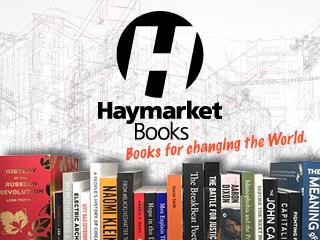Protesting ALEC in Portland
By
PORTLAND. Ore.--More than 600 people took the streets on February 29 as part of a nationwide call by Occupy Portland to protest corporations with ties to the right-wing American Legislative Exchange Council (ALEC). Because of awareness-raising actions like these, more activists and community members are learning the concrete ways that the corporate class rules our society.
Demonstrators visited several corporations with ties to ALEC over the course of the three-hour march, including Wells Fargo, Verizon Wireless and Oregon's largest health insurer, Blue Cross Blue Shield.
The action was energetic throughout the day and included a clown brigade dressed as mounted police, a contingent of Raging Grannies, an umbrella brigade and a Yes Men-style faux press conference.
The action was organized over several months by the Portland Action Lab, an organization that emerged from Portland's November 17 Occupy the Banks day of action. The Portland Action Lab organizes on a spokes-council model and includes many different organizations and affinity groups. Attendance at organizing meetings for February 29 often swelled to more than a hundred.
THE DAY of action began with a rally near the Burnside Bridge, where marchers assembled in a covered area as temperatures dropped below 40 degrees and cold rain pounded the sidewalk. We were well prepared, however--the Portland Action Lab passed out free, yellow umbrellas, and pre-march music included pro-labor punk that kept spirits up.
As the march set off, the first chant was, "We're cold! We're wet! We're drowning in debt!" There was an initial delay of several minutes as the police attempted to block the demonstration from departing, but due to its size, the march was able to break through police lines and take the street.
The heavy police presence included a mounted brigade and riot police. However, the police were generally less violent than they have been at other recent demonstrations. Some activists credited this to the fact that federal authorities were in town investigating the Portland Police for civil rights violations--namely, the shooting deaths of several mentally ill individuals over the past five years.
Several tense moments occurred throughout the march, as police made seven arrests throughout the day. One such moment happened as the march passed through the site of the old Occupy Portland encampment, where several thousand people defied police dispersal orders and delayed eviction on the night of November 12, 2011.
As the February 29 march passed through the old center of the camp, police arrested two demonstrators, and the march stopped for several minutes as protesters confronted the cops. However, due to the tight organization of the march, marchers were able to move on to our next corporate target, McDonalds.
The mood of the demonstration was consistently cheerful in spite of the police presence. Music blended with chants such as "A-L-E-C, that doesn't spell democracy!" and "Racist, sexist, anti-gay, ALEC takes our rights away!"
The heavily fake-mustachioed Occupy Portland Police clown brigade formed a buffer zone between demonstrators and mounted police, although it did spray several peaceful protesters with silly string.
At the headquarters of the insurance company Blue Cross Blue Shield, the crowd cheered as a faux press conference declared that the company would be resigning from ALEC and declaring equal access to health care to be a human right.
Although the rain-soaked demonstration was smaller than similar marches in November and December, it provided a much-needed boost to the spirits of Occupy Portland activists, and showed that the movement against corporate power and the rule of the 1 percent is still organizing.
Many of the activists present had been to demonstrations before--but only since the start of the Occupy movement. Occupy Portland has survived the destruction of our camps and radicalized a whole new layer of activists determined to push demands for economic justice forward.
The next challenge for organizers is to move from smaller, symbolic actions to concrete, mass demonstrations that can engage a wider layer of the 99 percent and begin to truly challenge corporations and the government that does their bidding.


